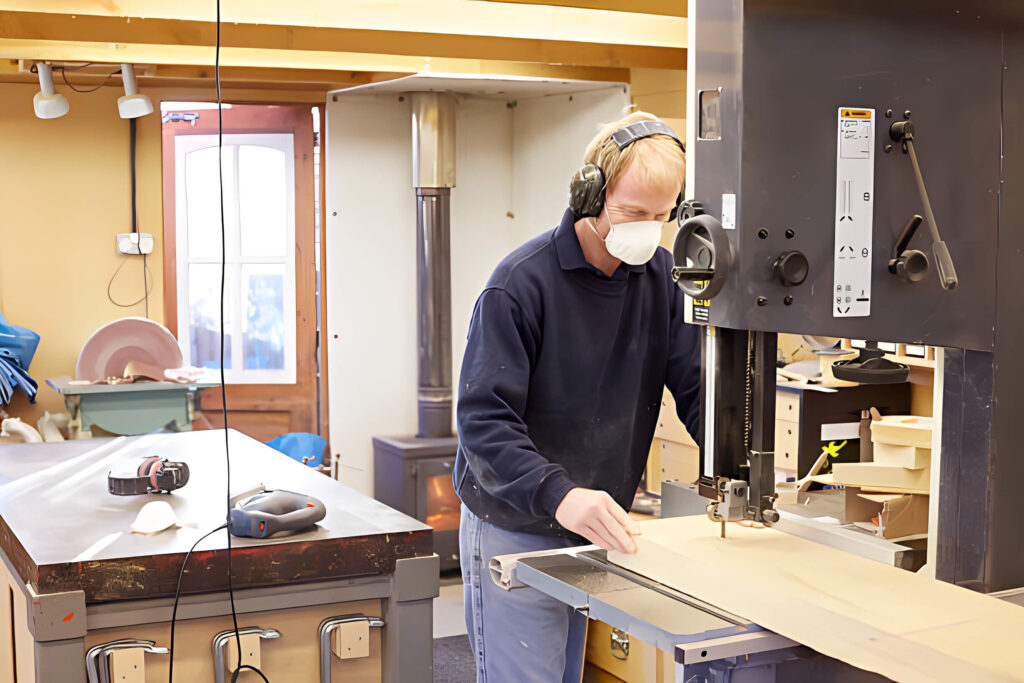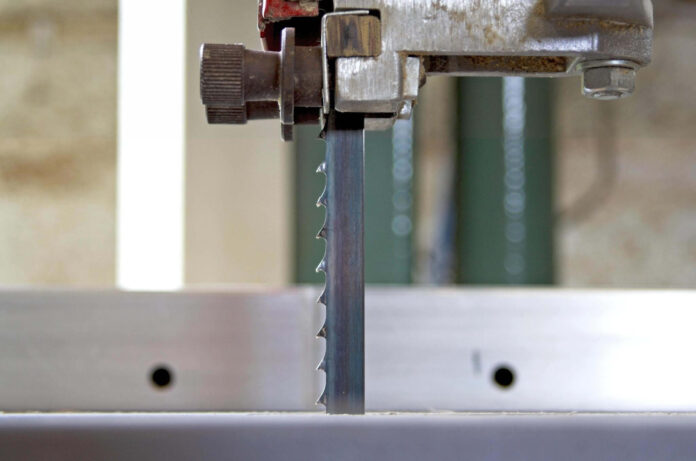Keeping your band saw blade sharp is crucial for accurate cuts and efficient woodworking. With regular maintenance and proper sharpening techniques, you can ensure optimal performance and extend the life of your blade. In this guide, we’ll walk you through the process of sharpening a band saw blade.
Table of Contents
Introduction
Maintaining a sharp band saw blade is essential for achieving precise cuts and minimizing material waste. Dull blades can lead to rough edges, increased friction, and slower cutting speeds. By following these steps, you can keep your band saw performing at its best.
Safety Precautions for Band Saw Blade Sharpen
Before we begin, it’s important to prioritize safety. Follow these precautions to prevent accidents and injuries:
- Wear protective gear: Always wear protective gloves and safety glasses when handling the blade and sharpener.
- Unplug the band saw: Ensure the band saw is unplugged before starting any maintenance or sharpening tasks.
- Maintain a clean workspace: Keep your work area clean and organized to avoid tripping hazards and ensure better focus during the sharpening process.
- Avoid rushing the process: Take your time and follow each step carefully, avoiding any shortcuts that may compromise safety.
Tools and Materials Needed
To effectively sharpen your band saw blade, gather the following tools and materials:
- Band saw blade sharpener: Choose a sharpener that is suitable for your specific blade type.
- Protective gloves: Wear gloves to protect your hands from sharp edges.
- Safety glasses: Safety glasses will shield your eyes from any potential debris.
- Cleaning cloth: Use a clean cloth to wipe down the blade and remove any dust or residue.
Step 1: Prepare the Band Saw Blade
Start by removing the blade from the band saw. Carefully detach it from the wheels and lay it on a clean, flat surface. Take the time to inspect the blade for any signs of damage or excessive wear. Next, clean the blade thoroughly using a cleaning cloth to remove any dirt, sawdust, or residue.
Step 2: Set Up the Blade Sharpener
Follow the manufacturer’s instructions for setting up the band saw blade sharpener. Different sharpeners may have specific requirements, so it’s important to refer to the user manual provided by the manufacturer. Ensure that the sharpener is securely mounted and stable before proceeding.
Step 3: Align the Blade
Proper alignment of the blade with the sharpener is crucial for achieving consistent and accurate sharpening results. Check the manufacturer’s guidelines for aligning the blade with the sharpener, as each model may have different specifications. Take your time to ensure the blade is correctly positioned before moving on to the next step.
Step 4: Sharpen the Blade
Now it’s time to sharpen the band saw blade. Follow the recommended sharpening technique provided by the sharpener manufacturer. Be patient and maintain a steady pace as you move the blade across the sharpener. Ensure that each tooth receives equal attention and is sharpened uniformly. Repeat the sharpening process for all sections of the blade until complete.
Step 5: Test the Sharpness
After sharpening the blade, it’s essential to perform a test cut to check its sharpness. Attach the blade back onto the band saw and make a cut through a scrap piece of wood. Pay attention to the quality of the cut and the smoothness of the edges. If the blade is properly sharpened, you should notice cleaner cuts and reduced resistance.

Common Mistakes to Avoid
To achieve the best results when sharpening your band saw blade, keep these common mistakes in mind and take steps to avoid them:
- Incorrect blade alignment: Improper alignment can result in uneven sharpening and compromised performance.
- Over-tightening of the blade: Over-tightening the blade can cause excessive strain and reduce the lifespan of the blade.
- Neglecting regular maintenance: Regularly inspect your blade for signs of wear and damage, and perform routine maintenance to ensure optimal performance.
- Using the wrong type of sharpener for the blade: Different blade types may require specific sharpeners. Using the wrong sharpener can lead to ineffective results and potential damage to the blade.
Troubleshooting Tips for Sharpening
Despite following the prescribed steps, you may sometimes encounter difficulties when sharpening your band saw blade. Here are some troubleshooting tips to help:
- Blade still seems dull after sharpening: If you notice that the blade remains dull despite your sharpening efforts, it may be due to the blade’s age or the presence of hardened spots. In such cases, it may be beneficial to replace the blade.
- Uneven edges after sharpening: Uneven edges can be due to inconsistent pressure during the sharpening process. Try to maintain a steady hand and uniform pressure when passing the sharpener over the blade teeth.
- Damage after sharpening: If you notice nicks or cracks on your blade after sharpening, it might be because the sharpener is not suited for your blade type or you’re applying too much force. Always ensure you’re using the correct tools and techniques for your specific blade.
- Poor cut quality despite a newly sharpened blade: This could be due to misalignment or tension issues. Double-check your band saw’s settings and blade alignment. Recalibrate if necessary.
Remember that with practice comes proficiency. Don’t get discouraged if you face issues initially; with time, you’ll be able to sharpen your band saw blades efficiently and effectively.
Conclusion
Regular maintenance and proper sharpening techniques are essential for keeping your band saw performing at its best. By following this step-by-step guide, you can ensure that your band saw blade remains sharp, resulting in cleaner cuts and increased efficiency in your woodworking projects. Remember to prioritize safety, take your time, and enjoy the satisfaction of working with a finely sharpened band saw blade. Happy woodworking!
Frequently Asked Questions (FAQs)
What type of sharpener should I use for my band saw blade?
Each band saw blade type may require a different sharpener. Check your blade’s specifications or consult with the manufacturer to determine the best kind of sharpener to use.
How often should I sharpen my band saw blade?
The frequency of sharpening depends on your usage. If you use your band saw regularly, you might need to sharpen the blade after every few uses. However, if you notice a decrease in cut quality or increased difficulty in cutting, it may be time to sharpen your blade.
How do I know if my blade is properly aligned?
A properly aligned blade will cut straight and won’t drift or wobble. If you notice these problems, it may be a sign of misalignment. Your band saw’s user manual should provide instructions on how to check and adjust blade alignment.
Can I sharpen a blade that has hardened spots?
Hardened spots on a blade can make it difficult to sharpen effectively. In some cases, these blades may need to be replaced. However, some professional sharpening services may be able to help if you’re finding it difficult.
For further insights on band saws, please refer to our comprehensive articles on this topic.

